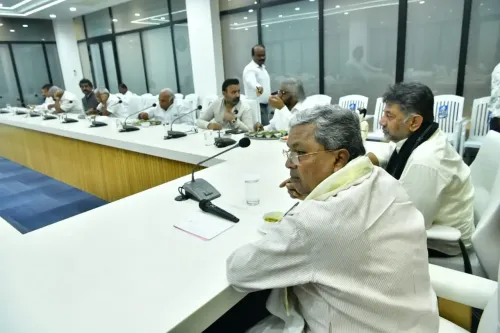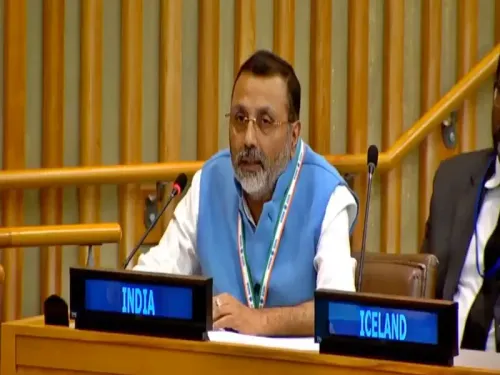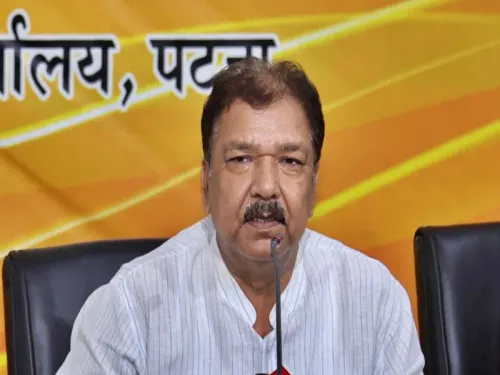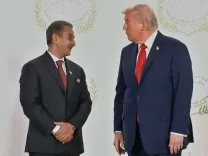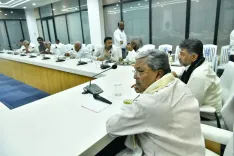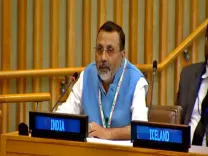How Did Pakistan’s Military Generals Drive the Nation into Bankruptcy?
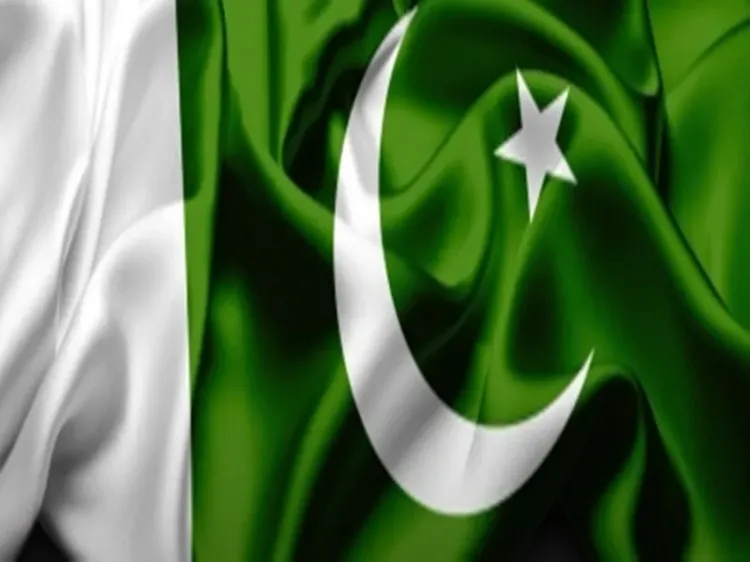
Synopsis
Key Takeaways
- Pakistan's poverty rate has surged to 25%, reversing years of progress.
- Military spending is prioritized over public health and education.
- Over 85% of jobs in Pakistan are informal, lacking security.
- Corruption and mismanagement hinder aid from reaching those in need.
- Reform requires reclaiming civilian authority and accountability.
New Delhi, Oct 13 (NationPress) The economy of Pakistan serves as a stark illustration of the consequences when the nation’s dominant institution prioritizes its own interests over those of the populace. Recent insights from the World Bank reveal that one in four Pakistanis now exists below the poverty threshold, confirming a long-standing reality: the nation’s poverty is a predictable outcome.
Once marked by cautious optimism, Pakistan witnessed a decrease in poverty rates from over 64 percent in 2001 to below 22 percent in 2018, spurred by remittances and foreign assistance. However, this fragile progress has now crumbled, with poverty rates surging back to 25 percent within just three years, reversing nearly two decades of advancements.
While factors like inflation, natural calamities, and inadequate reforms play a role, the root cause resides in a political-economic framework that siphons national wealth from the underprivileged to an unaccountable military elite. The federal budget of Pakistan narrates a tale of misguided priorities.
Military expenditure is escalating at double-digit percentages, while vital public sectors such as health and education remain severely underfunded. In the latest budget, military spending saw an increase of nearly 20 percent, surpassing 2.5 trillion rupees.
When hidden expenses — including pensions, procurement, and clandestine allocations — are factored in, defense takes up roughly 15 percent of total expenditures, significantly higher than in similar developing nations.
In stark contrast, combined funding for health and education generally receives less than 2 percent of GDP. Each rupee that could be utilized for training educators or equipping clinics instead fuels tanks, missiles, and the privileged lifestyles of retired officers residing in exclusive real estate developments.
The imbalance is both moral and fiscal: a framework that prioritizes power over service inevitably siphons the future from its citizens. The repercussions are severe.
Nearly 40 percent of children suffer from stunting due to malnutrition; a quarter of school-aged children are entirely out of school. Among those who do attend, three-quarters are unable to read a basic text by the conclusion of primary education.
Half of households lack access to safe drinking water, and a third live without sanitation. These are not random effects of poverty but symptoms of intentional neglect by a state that invests in military infrastructure rather than its people.
Military Empire, Civilian Ruin
Pakistan’s job market reflects this distortion. Over 85 percent of employment opportunities are informal, lacking security or social safety nets. Women's workforce participation is among the lowest in Asia. The issue is not a lack of talent; it lies in the allocation of resources.
Capital that should support small businesses or rural development instead bolsters a sprawling military-commercial complex — a web of factories, banks, real estate ventures, and logistics companies owned by military foundations or retired officers.
This system inhibits genuine private enterprise, leaving citizens to rely on patronage instead of productivity. The military’s economic influence has grown so vast that it now directly competes with the very market it is meant to protect. A state where the military acts as both regulator and competitor cannot expect sustainable growth.
The tragedy is exacerbated by the assertion that such spending guarantees security. In reality, Pakistan’s security establishment has repeatedly supported militant proxies and contributed to regional instability, actions that have cost the nation billions in lost trade, investments, and global standing.
Resources that could have established schools in Sindh or clinics in Balochistan have instead funded militant operations in Kashmir and Afghanistan. The result is predictable: isolation on the international stage and deprivation at home.
The 2022 floods revealed the depth of the governance crisis. Millions were displaced, crops were ruined, and entire villages were inundated. Despite international donors pledging billions in relief, mismanagement and corruption meant that a significant portion of aid never reached those in need. Military procurement, however, remained uninterrupted.
New housing projects for military officers were greenlit even as displaced families languished in makeshift camps. This painted a grim picture of priorities: when the impoverished suffer, bureaucracy expands its privileges.
Pakistan’s economic reliance on external support — IMF bailouts, Chinese loans, and expatriate remittances — is inextricably linked to military supremacy.
Rather than channeling funds into institutional reform, the government diverts them to support a bloated defense apparatus. Analysts have long cautioned that foreign loans intended for stabilization often inadvertently fund military initiatives.
The burden of repayment falls on the populace through increased inflation, taxation, and currency devaluation, while accountability remains elusive.
A Youthful Nation, a Wasted Future
Pakistan’s median age is barely twenty, making it one of the youngest nations globally. Yet this demographic advantage has morphed into a demographic threat. With no employment opportunities, millions of young people face idleness or exploitation.
Some seek perilous work abroad; others are lured into extremist groups. Each lost opportunity is a silent condemnation of a system that values power over progress. The exodus of skilled professionals is accelerating, draining the country of its most precious resource — human capital.
Those who remain confront escalating inequality. The military and political elite enjoy life in gated communities with uninterrupted electricity, private healthcare, and foreign education for their children.
In contrast, ordinary citizens grapple with daily power outages, collapsing healthcare facilities, and skyrocketing food prices. One Pakistan resides behind fortified walls; the other struggles to survive.
The military's public persona as a disciplined and patriotic entity conceals a history of obscure dealings. Land grants, insider contracts, and monopoly privileges enrich those in uniform while depriving public institutions of necessary resources. Civilian administrations attempting to enforce transparency face coercion or dismissal.
Judges, journalists, and activists exposing military corruption risk intimidation or imprisonment. Under these conditions, genuine reform is performative; actual authority lies elsewhere.
This concentration of power elucidates why every economic recovery in Pakistan is ephemeral. Growth collapses whenever external funding ceases because the underlying imbalance — a military-dominated state masquerading as a democracy — remains unaddressed. No amount of aid can rectify an economy that serves its rulers instead of its workers.
Pakistan is endowed with everything it requires to thrive: fertile land, enterprising citizens, and strategic access to regional markets. Yet potential is rendered meaningless when monopolized by a single institution.
As long as the military claims the bulk of the national budget, interferes in politics, and shelters militant groups, poverty will worsen, and governance will continue to deteriorate.
One in four citizens lives in poverty. Forty percent of children experience malnutrition. Women are marginalized in the workforce. Inflation diminishes savings. Debt continues to accumulate.
Meanwhile, the military persists in expanding its economic influence, acquiring land, industries, and power. This is not a misfortune; it is a design — a system constructed to benefit the few at the expense of the many.
The World Bank's warning is unmistakable: unless Pakistan redefines its civil-military dynamics and reallocates spending towards health, education, and entrepreneurship, social disintegration will hasten. Reform cannot arise from within the existing hierarchy; it necessitates the reclamation of civilian authority and the restoration of accountability.
Pakistan today resembles an army with a state attached rather than a state with an army. Generals oversee an economic model that extracts from the impoverished to sustain their privileges, while citizens bear the consequences — poverty, debt, and disillusionment.
The nation’s crisis is not rooted in a scarcity of resources but in the systematic appropriation of those resources by its own power structure. Until civilian institutions regain prominence and the military retreats to its constitutional duties, no loan, reform, or foreign promise will rescue Pakistan from this downward spiral.
The statistics are clear; the responsibility is evident. A state that permits its protectors to morph into its profiteers ultimately self-destructs.

